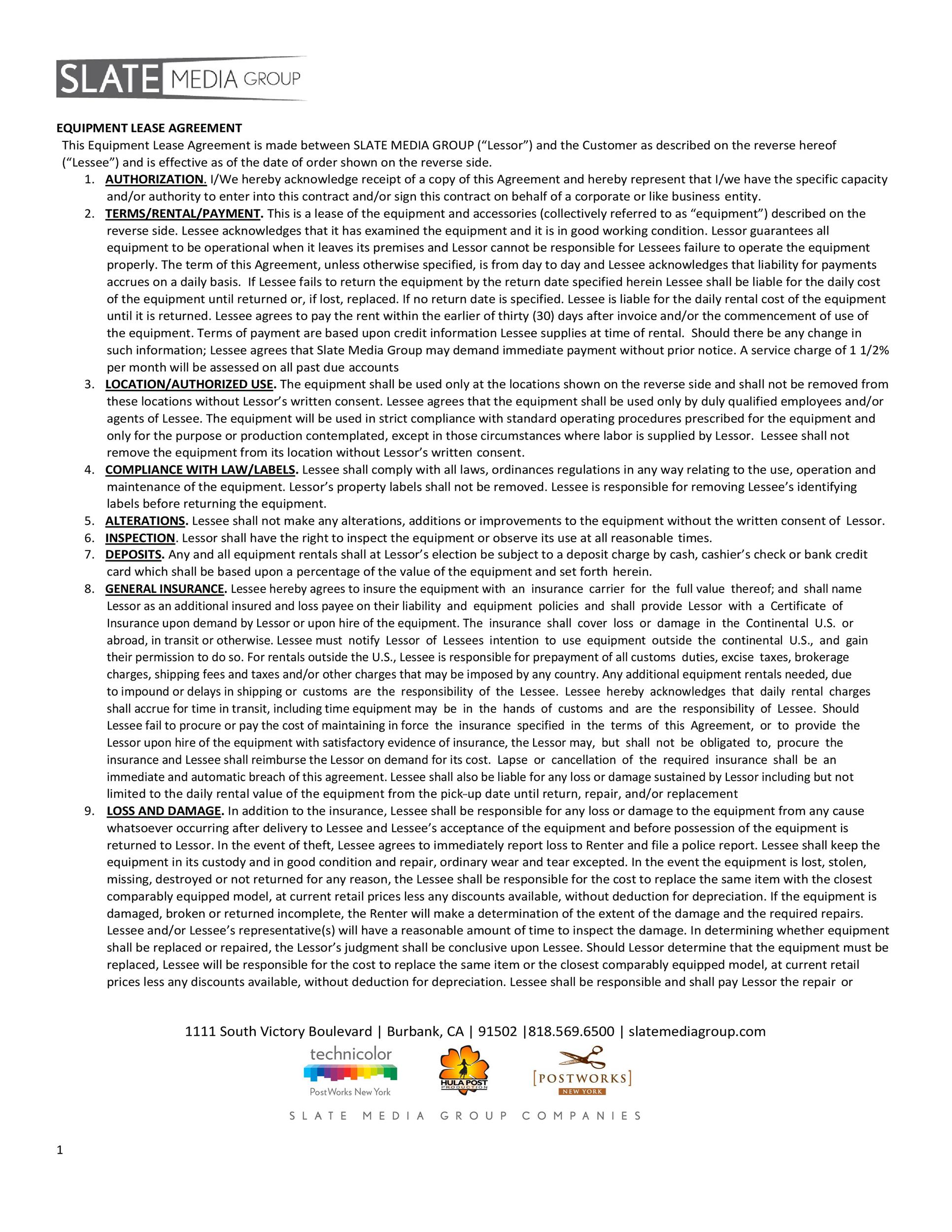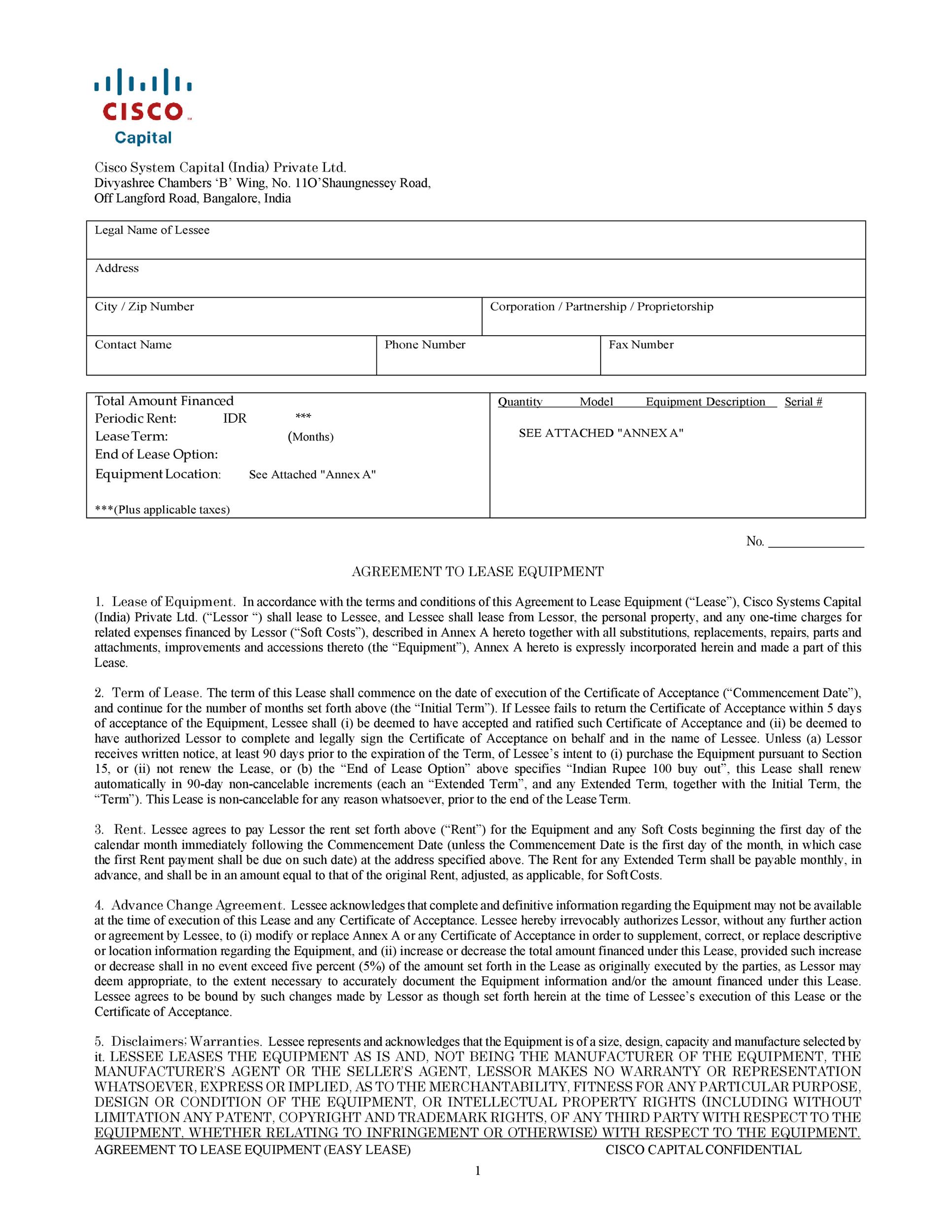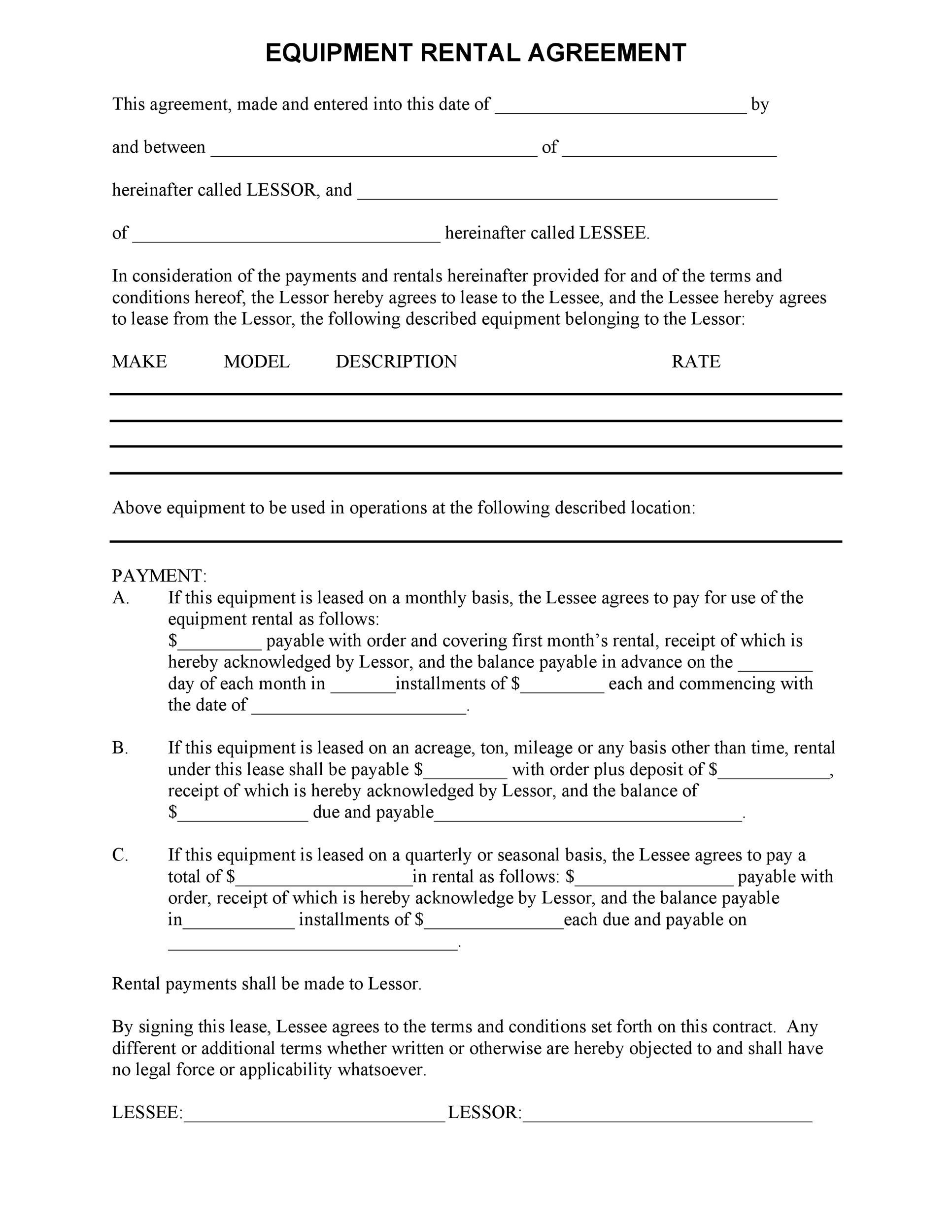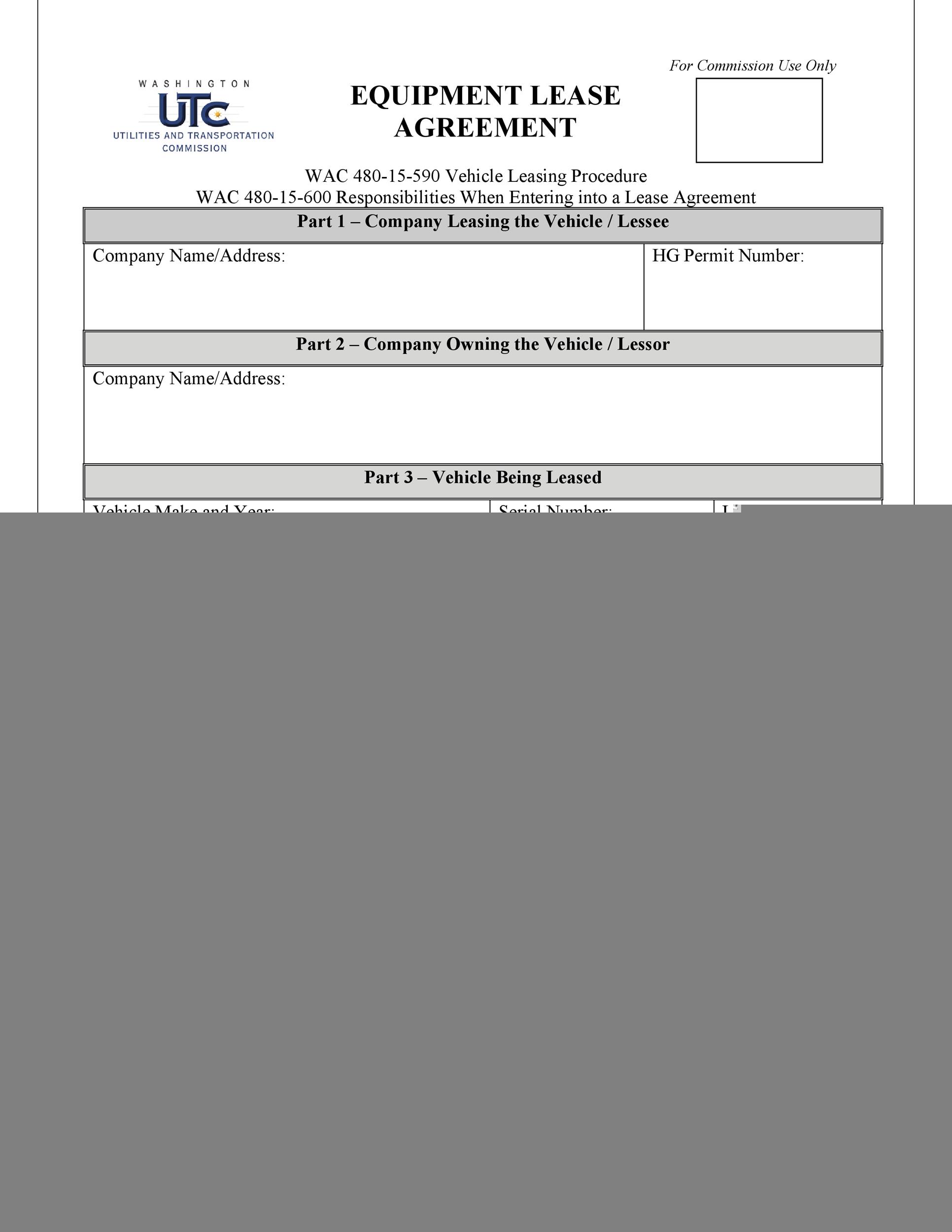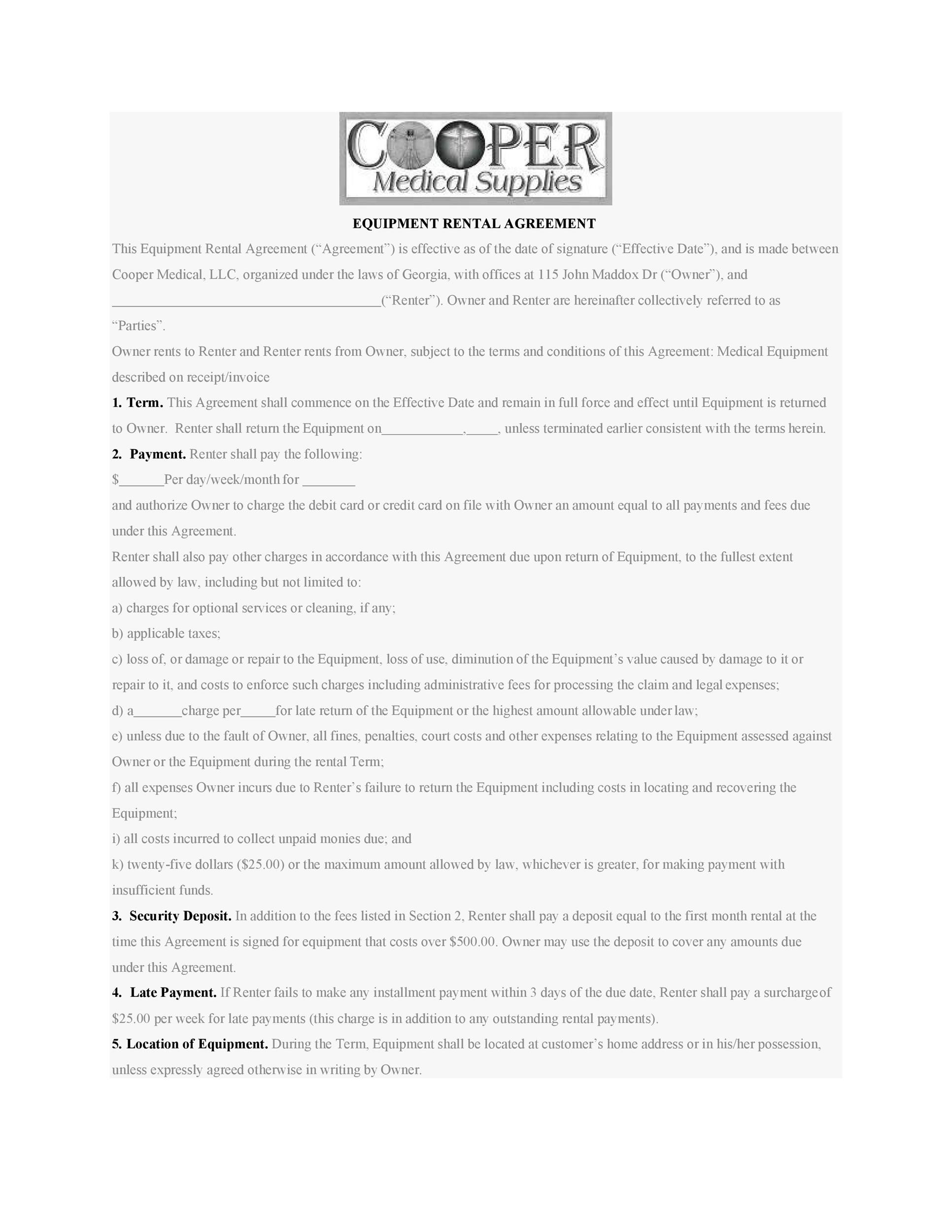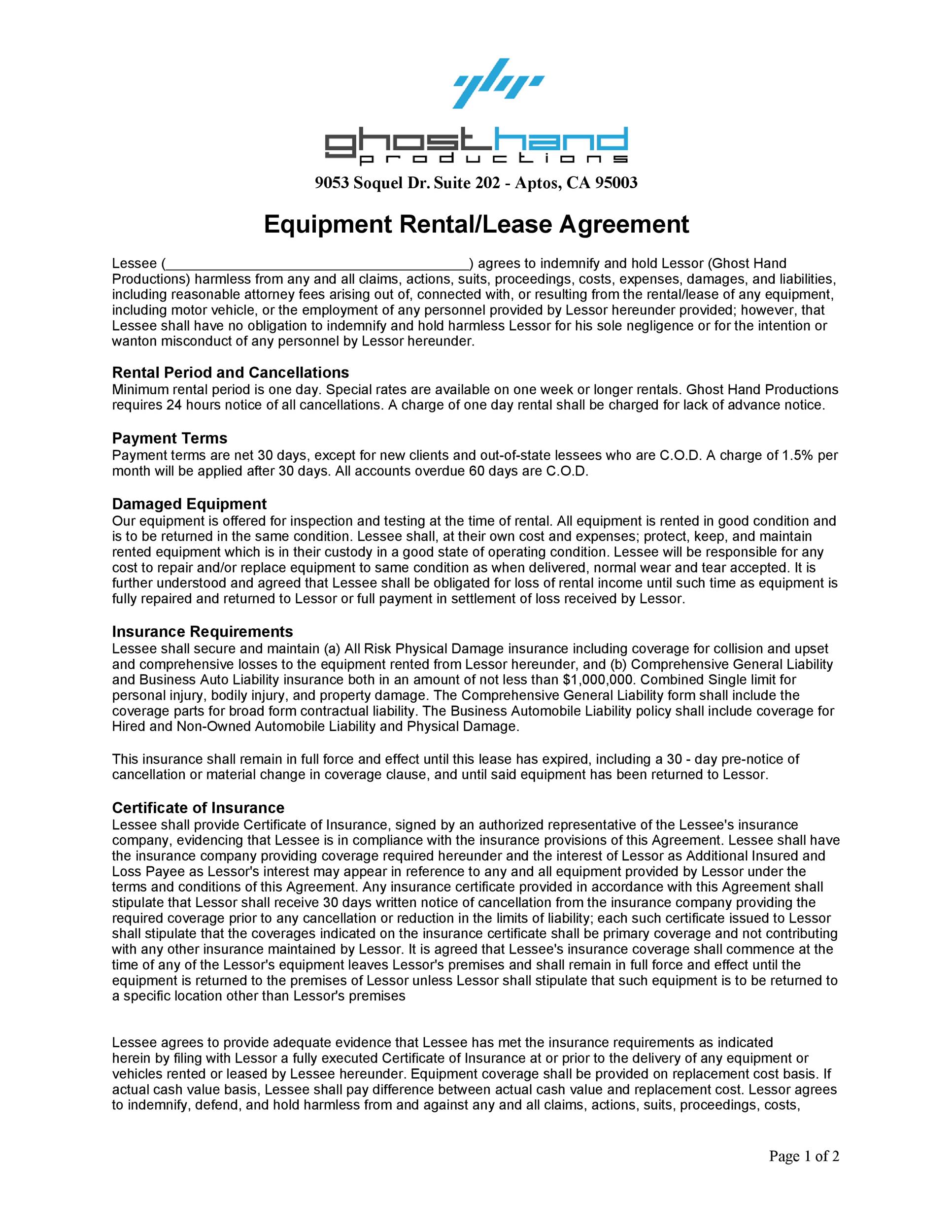If you need to draft an equipment rental agreement, you probably have been looking at examples of short-term equipment rental agreements. The trouble with writing a rental equipment agreement form based solely on other examples is that they might not cover all the information that you want to include in your own contract. There are various clauses and provisions that you might want to add to your contract, and you should be sure that you know how to add these additional clauses before you start writing.
If you offer equipment leasing, you need to have the right kind of equipment rental agreement template on hand each time you rent to someone. This will protect your assets and your business and also protect your right to ask for payment in exchange for the rental of your items. Knowing how to write this kind of contract correctly is important for your business for a whole host of reasons.
Table of Contents
- 1 Equipment Lease Agreements
- 2 What is an equipment lease agreement?
- 3 How does equipment lease work?
- 4 Equipment Rental Agreements
- 5 What are the types of equipment leases?
- 6 Equipment Rental Contracts
- 7 How do you write an equipment lease agreement?
- 8 Equipment Rental Agreement Templates
- 9 Equipment Leases Are Easy to Arrange With Proper Documentation
Equipment Lease Agreements
What is an equipment lease agreement?
An equipment rental contract will allow you to explain the rules and limitations of your equipment lease process and will also provide information related to legal action that you want to prevent from being taken against you. Equipment leases can be as long or as short as you wish. These documents can also go by other names:
- Equipment rental contract
- Equipment rental agreement
These names have no impact on the legality of the document or its function. You might choose one or the other name for the document without impacting its use. This document protects the person renting the items and also the person who owns them from legal action. The equipment rental agreement template will also list the responsibilities of each party who signs the document.
These rentals can be done daily, weekly, monthly, or even annually. The goal of this kind of arrangement is to make money for the owner of the equipment. It is also to allow the person renting the equipment to be able to afford to access the machine that they need to get a job done. These kinds of leases are common for construction and other kinds of jobs that require the use of heavy machinery. Not everyone can afford to buy this kind of machinery, so a lease or a rental is the right solution in these cases.
How does equipment lease work?
When a company or a person does not have the money to rent a piece of equipment, they will often enter into a lease agreement for the equipment in question. This agreement details the required behaviors of each of the parties involved in the lease to ensure that the equipment is not damaged and to ensure that the person who owns the equipment will get it back when the agreement ends.
These agreements often include payment schedules, legal limitations, and even options to allow for purchase through the lease. Renting-to-own is quite common for large pieces of equipment, and this can be another form of this kind of equipment rental agreement.
Late charges and other fees need to be outlined in the document, as well as potential penalties for damage to the equipment or illegal sale of the item to another party. Without these kinds of details in the document, there can be issues related to the disagreement between the parties involved and problems to do with taking legal action against someone who has damaged the equipment.
Equipment Rental Agreements
What are the types of equipment leases?
The most common industries which utilize machine or equipment rental agreements are:
- Recreation (examples: snowshoes, four-wheelers, kayaks etc.)
- Manufacturing (examples: machining tools, plasma cutters, heavy equipment)
- Transportation (examples: semi-truck, moving vans, heavy equipment)
- Construction (examples: bulldozers, cranes, etc.)
- Restaurants (examples: appliances, catering equipment, cooking items)
- Healthcare (examples: power wheelchairs, x-ray machines, testing equipment)
You will need to have the right information in these kinds of contracts in particular because these can be long-term agreements that last for years. This is different from just renting an item for a week, and the liability that is associated with these larger items is more important than just loaning a small machine to someone.
Equipment Rental Contracts
How do you write an equipment lease agreement?
- Contact Information For Both Parties: Both of the parties who are involved in the contract need to be identified by their full legal names. You cannot use nicknames or incomplete business names in this section of the contract if you want it to be legally binding. You will also need to include the address and phone number of each party. If there are going to be three or more people involved in the contract, every single person who will be part of the lease will need to be identified at the top of the document.
When you do not use the full legal names of the parties who are involved in the lease, you can open yourself up to issues with the usefulness of the contract. It can also become associated with the wrong people, and that can lead to issues that impact the credit report of people who are not involved in the lease. It is always wise to be sure that you have all the right information in this part of the contract and to be meticulous with regard to spelling. - Type of the Lease: Since there are various kinds of leases that you might use for your equipment lease, you need to be specific about the lease type. This helps to define the conditions of the lease clearly for both parties. The lease might be a fixed lease, or it could be an interval lease. The fixed lease becomes effective on the start date of the contract, and it will terminate on the end date. This is a simple lease and the most common of the lease types.
The interval lease is made for when equipment is needed on an interval basis and not every day for the duration of the lease. The intervals are agreed upon in advance, and these might be a few months in the summer or maybe a week of each month. However the intervals work out, this will need to be listed in the contract clearly so as to avoid confusion down the road. - Equipment Information: The equipment that is going to be leased will need to be described clearly in this section. This contract might be from more than one item, and if that is the case, all of the equipment will need to be described here. Make sure that make, model, year, and more are included in this part of the document for the sake of clarity. This is the legal record of the lease itself, and the correct items must be included here to make sure that the contract is correct and accurate.
- How Payment Will be Made: You can accept payment in whatever way you have determined is fair for you and the person renting the equipment. The payments might be made in cash, taken electronically, offered via credit card, or in any other format that has been discussed. The nature of the payment and the schedule for the payments must be clear to keep everyone involved in the agreement on the same page. This is one of the most important sections of the contract and one that you cannot neglect to include in your document.
- Late Fees and Penalties: It is always a good idea to include information about the fees and penalties that might be assessed if payment is missed, if the equipment is damaged, and any other kind of detail that might lead to a charge of some kind to make things right. All of these fees and charges need to be linked with the right actions and also need to have a set time period that is made clear for their repayment.
This section might also require that certain actions be taken to repair or replace the items that have been damaged. Fees can sometimes be linked with the promise to make repairs or to replace parts for the forgiveness of the fee as well. - Information About the Use of the Equipment: The delivery and return of the leased items need to be clarified in this section of the document. You might need to explain the time frame for delivery and pickup as well as the penalties for missing these deadlines. You will also want to indicate where the equipment is to be used and state that it cannot be used in another location without permission being given to relocate it. Knowing where the equipment is can be critical to repossessing the item if there is a need for that action to be taken.
Insurance and taxes are key information that needs to be added to this document as well. Make sure that you state what level of insurance you expect to be carried on the items while they are in possession of the renter. You will also want to be sure that you outline what the taxes will be for the use of the item if there are any. Regulation fees, licensing fees, and permits are the responsibility of the person renting the item and not of the owner of the equipment. - Warranty Period: Warranties will need to be made in most cases as well. There might be no warranties made if the item is leased “as-is”. The person leasing the item does so at their own risk. There might also be a limited warranty which only grants the equipment to be in good working order at the time of pickup, but that does not promise that the item will continue to be so when it leaves the owner’s property or possession. There are usually no other implied warranties attached to the lease.
- Cancellation of the Lease: The lease can be canceled for various reasons in most cases. You need to outline the ways in which the agreement can be ended. There will need to be informed about the number of days needed to cancel the lease with proper notice and the actions that have to be taken to make sure that the cancellation takes place.
- Subletting: If subletting is allowed, then you will need to explain exactly how the sublease agreement can work. The sublet will almost always need to be done with the agreement of the owner of the equipment as well.
- Signatures: The equipment owner and the person renting it will need to sign the contract and date the signature lines. An unsigned contract is invalid, and you cannot afford to miss this step if you want the contract to be useful to you as the person renting the item. This is also critical for those choosing to rent an item since they will also get protection from the contract while it is active.
Equipment Rental Agreement Templates
Equipment Leases Are Easy to Arrange With Proper Documentation
When you are going to lease a piece of equipment to someone, you need to be sure that you have the right documentation on file to protect the lease agreement. Contracts like this are critical to ensure that everyone involved in the arrangement is honest about it and keeps the rules in mind while the contract is in effect. Being sure that everyone has the protection of a legal document that backs the lease is key to making sure that it will be upheld properly.
When you are crafting a lease agreement, you need to be sure that you have thought of all of the details that must be included. The more clear and definitive the lease document is, the more likely it will be to create an agreement that everyone can follow. Without a quality contract on the file between the owner of the equipment and the person renting it, there are almost always bound to be issues with the agreement as it progresses.















